#Telemedicine App
Text
Why Partnering with a Telemedicine App Development Company Is Key to Digital Healthcare Transformation
The digital revolution has profoundly impacted the healthcare industry, and telemedicine is at the forefront of this transformation. Telemedicine allows patients to connect with healthcare providers remotely, making healthcare more accessible, efficient, and affordable. With the rise of technology and the global pandemic, telemedicine has experienced exponential growth, becoming a core service for many healthcare organizations. A top-notch telemedicine app development company plays a critical role in building these apps, which cater to patients and providers alike.
The Benefits of Telemedicine for Patients and Providers
Telemedicine offers numerous advantages for both patients and healthcare providers. The demand for virtual healthcare has surged, and telemedicine addresses several key challenges:
Increased Access to Care for Patients
Patients no longer need to travel long distances for consultations or wait days for an appointment. With telemedicine apps, patients can receive care from the comfort of their homes, accessing specialists in various locations.
Reduced Operational Costs for Healthcare Providers
For healthcare providers, telemedicine reduces overhead costs associated with physical office space and administrative tasks. Providers can expand their reach without needing to invest in additional resources for physical expansion.
Convenience and Efficiency in Healthcare Delivery
Telemedicine enhances efficiency by streamlining patient consultations, enabling real-time communication, and allowing for quicker follow-ups. This efficiency results in shorter wait times and better healthcare outcomes.
Key Features of a Telemedicine App
For telemedicine to be effective, the app must include specific features that enhance user experience, privacy, and functionality. When working with a telemedicine application development company, it is crucial to ensure these key features are included:
Real-Time Video Consultations
Live video consultations are the backbone of any telemedicine app. Patients can have face-to-face interactions with doctors, which is vital for accurate diagnosis and effective communication.
Secure Patient Data Management and Privacy
Given the sensitive nature of healthcare information, data security is paramount. A telemedicine app must comply with privacy laws like HIPAA in the U.S. and GDPR in Europe, ensuring patient data is encrypted and securely stored.
Scheduling, Prescription, and Billing Integration
Seamless integration of appointment scheduling, e-prescriptions, and billing ensures a smoother user experience. It reduces administrative burdens for healthcare providers and simplifies processes for patients.
AI-Driven Symptom Checkers and Health Monitoring
Telemedicine apps can incorporate AI tools to assist in diagnosing patients. AI-driven symptom checkers and health monitoring tools can provide preliminary assessments, freeing up time for healthcare professionals to focus on more complex cases.
How a Telemedicine App Development Company Drives Innovation
Developing a telemedicine app requires technical expertise and a deep understanding of healthcare needs. A telemedicine software development company brings innovation by creating custom solutions tailored to specific requirements.
Custom Solutions Tailored to Healthcare Needs
Each healthcare provider has unique needs. A custom telemedicine app development company offers customized features that align with the specific objectives of the organization, ensuring the app meets both provider and patient expectations.
Integration with EHR/EMR Systems
Telemedicine apps need to integrate with Electronic Health Records (EHR) and Electronic Medical Records (EMR) systems to streamline workflows and give healthcare professionals access to patient histories during virtual consultations.
Compliance with Healthcare Regulations (HIPAA, GDPR)
Compliance is a significant aspect of telemedicine app development. A reputable telemedicine mobile app development company ensures that the app adheres to strict regulatory standards, protecting sensitive health data.
Ongoing Support, Updates, and Scalability
After the initial development, it is essential to provide ongoing technical support, and updates, and ensure the app is scalable. A telemedicine application development company offers continuous services to adapt to new regulations, technology, or features.
Technology Stack Used by Telemedicine App Development Companies
The technology behind telemedicine apps is critical to their success. The typical tech stack for developing a telemedicine app includes:
Key Technologies for Front-End and Back-End Development
For front-end development, frameworks like React Native and Flutter ensure the app runs smoothly across different platforms. Back-end technologies like Node.js, Python, or Ruby on Rails provide robust data management and processing capabilities.
Data Encryption and Security Measures
Security is a top priority for healthcare apps. Telemedicine app developers use AES encryption, two-factor authentication, and blockchain technology to secure patient data.
Cloud Integration for Scalability
Cloud services such as AWS or Google Cloud allow telemedicine apps to scale efficiently. Cloud infrastructure ensures the app can handle increased traffic and data without compromising speed or security.
Challenges in Developing a Telemedicine App and How Experts Overcome Them
Developing a telemedicine app comes with its own set of challenges. However, a professional telemedicine mobile app development company is well-equipped to address these:
Data Security and Patient Privacy Concerns
One of the biggest challenges is ensuring the security of sensitive health data. A development company can implement strong encryption, secure access controls, and comply with privacy regulations to mitigate this risk.
Ensuring Seamless Video Communication
Achieving real-time video communication without lags or connectivity issues is another challenge. Developers use WebRTC technology and powerful servers to ensure smooth and uninterrupted communication between patients and providers.
Handling Large Amounts of Patient Data
Telemedicine apps generate vast amounts of data. Efficient data management and cloud integration are essential for storing, processing, and retrieving information quickly and securely.
Why Partnering with a Telemedicine App Development Company Is Critical
The complexities of developing a telemedicine app necessitate working with experts. Here’s why partnering with a telemedicine software development company is crucial for healthcare providers:
Expertise in Healthcare Industry Standards and Regulations
Telemedicine app developers have in-depth knowledge of healthcare regulations and standards. Their expertise ensures compliance with laws like HIPAA, avoiding legal issues.
Customization to Meet Specific Provider and Patient Needs
Every healthcare provider has different requirements. A telemedicine mobile app development company creates customized solutions, ensuring the app caters to the provider’s workflow and patient care strategies.
Efficient Project Management and Timely Delivery
A dedicated development company brings structure to the project, ensuring timely delivery and smooth communication throughout the development process.
Future Trends in Telemedicine and Digital Healthcare
Telemedicine is evolving rapidly, and several trends are shaping its future:
AI and Machine Learning Integration in Telemedicine Apps
Artificial intelligence is becoming a key player in telemedicine. AI-driven tools will allow for even more precise diagnostics and personalized treatment plans.
Wearables and Real-Time Health Monitoring
Wearables, like smartwatches and fitness trackers, are increasingly being integrated into telemedicine platforms, providing real-time health data for providers.
Virtual Reality (VR) for Remote Healthcare
The integration of virtual reality into telemedicine has the potential to revolutionize remote consultations and therapy, providing more interactive and immersive experiences.
Final Thoughts
Partnering with a telemedicine mobile app development company offers numerous advantages, from compliance and security to innovation and customization. With telemedicine becoming a cornerstone of healthcare, having the right technology partner ensures that healthcare providers can offer accessible, secure, and efficient care to patients.
FAQs - Telemedicine App Development
1. What is a telemedicine app development company?
A telemedicine app development company specializes in building applications that allow healthcare providers and patients to connect virtually. These companies focus on healthcare compliance, security, and user experience.
2. How long does it take to develop a telemedicine app?
The time to develop a telemedicine app depends on the complexity of the app and the features required. On average, it can take anywhere from 3 to 6 months.
3. Is telemedicine secure?
Yes, with the right technology and compliance measures (HIPAA, GDPR), telemedicine apps are highly secure. Developers use encryption and secure servers to protect patient data.
4. What are the key features of a telemedicine app?
Key features include real-time video consultations, secure patient data storage, appointment scheduling, e-prescriptions, and AI-driven health monitoring tools.
5. Why is telemedicine important for the future of healthcare?
Telemedicine offers improved access to healthcare, reduced costs, and greater convenience, making it an essential part of the healthcare system’s digital transformation.
#mobile app development#app development company#mobile app developers#app development#app developers#telemedicine app development#app development services#telemedicine app
0 notes
Text
Everything You Need to Know About Telemedicine App Development
That is why telemedicine is an innovative method of providing healthcare services that is actively developing all over the world, and it is effective in addressing many problems and concerns for both clients and professionals. Since healthcare customers will probably seek even more distant care facilities, only powerful and convenient telemedicine applications can meet the demand. In this guide, you will learn the following: What is a telemedicine app, and what components must be included;
How to choose the right development partner?
Telemedicine is simply defined as the delivery of health care using elements of telecommunications. Thanks to telemedicine applications that recently became available for a patient’s smartphone, a person can speak with a doctor, get a diagnosis, and even receive a prescription without stepping outside their house. To these communities or individuals, this convenience will go a long way in accustoming them to the necessary treatment they need.
The identification of the key features of a telemedicine app has been the next step in the plan of action.
While designing telemedicine apps one must keep in mind certain features that would facilitate enhanced usability and efficient service delivery. Here are the key features every successful telemedicine app should include:
Here are the key features every successful telemedicine app should include:
User Authentication and Profiles: User authentication is essential to ensuring the data of patients is well protected from unauthorized access. Personal information, medical history, and preferred payment methods must be included in a profile and be encrypted to meet Health Care standards.
Appointment Scheduling and Management: One of the expectations of the user regarding the HIE is that a patient should be able to make an appointment, modify, or cancel an existing appointment seamlessly. There should be the integration of calendar applications to improve this feature with options such as reminders and notifications.
Video and Audio Conferencing: That is why high-quality secured video and audio conferencing functionality is crucial for remote consulting. Real-time communication should be made possible using the app and without interruptions such as lags.
Chat and Messaging: In addition to appointments made through a video call, a telemedicine app needs to provide secure messaging for more questions, for sharing results, and for fast consultations.
E-Prescriptions: The capability to generate e-prescription is considered one of the important features, through which a doctor can prescribe a medicine electronically, which a patient can pick from the pharmacy of his or her own choice.
Payment Integration: An efficient payment gateway that incorporates multiple choices of payments (cards, mobile wallets, insurance) makes the experience pleasant for the user.
Application of EHR Integration: The use of integrated EHR helps four various healthcare surroundings to have access to & update records that in turn makes decision-making & clinical care more effective.
Notifications and Alerts: Information that the patients receive includes but is not limited to upcoming appointments, medication reminders, or new test results.
Multi-Language Support: But to ensure it reaches as many consumers as possible, it only makes sense to integrate multi-language support in your app.
Analytics and Reporting: Having an analytics tool that captures the patient’s progress and usage patterns as well as creating reports can be of value to the healthcare providers.
Steps to Develop a Telemedicine App
There are several vital stages, which have to be passed for creating a telemedicine app. Here’s a step-by-step guide to help you navigate the development process: Here’s a step-by-step guide to help you navigate the development process:
Market Research and Planning: Start with an identification of customers’ needs that affect the choice of the appropriate vending machine. Establish what lack exists in the current telemedicine apps and how you are going to fill these.
Define the Scope and Features: Describe the key functionalities that your telemedicine app has to include. Choose if to develop an application as an MVP (Minimum Viable Product), or to begin with, an application with all the features one can imagine.
Choose the Right Technology Stack: It is quite evident that the technology stack has a significant contribution to the success of your telemedicine app. This time the technology selected should be able to grow with the organization, have security features, and be reliable. Some of the options are Swift or Kotlin for the mobile application and Node for the backend. js or ruby on rails for the backend The frameworks of system three coolAJAX or jQuery can be used while using JS.
Design UI/UX: More so, the graphics of a mobile application must be appealing for it to be considered a great mobile application since the first and foremost requirement for any mobile application is that it should have a friendly user interface. Engage in a layout that can easily be understood and navigated and which has a good feel and look. In your design, make sure that it meets the needs of the patients and the healthcare providers.
Development and Testing: Hire the best Telemedicine app development company to help you achieve your dream of success. This means that testing should be carried out several times in order to detect such problems before they affect the live app.
Compliance with Healthcare Regulations: Any telemedicine application is subject to legal requirements such as HIPAA, in the US, or GDPR, in Europe, to name a few. Consult with legal advisors about your app to check the standards that your application ought to meet.
Launch and Marketing: After your app is all set plan a strategic launch of the app. To increase the number of installations, make use of promotional campaigns such as ads that will focus on the functions that the app offers to its users.
Continuous Support and Updates: After the launch of the app, other support should be provided in case users face some problems and update the app that may include new features and enhancements.
Revenue Generation Strategies for a Telemedicine App
If you're planning to develop a telemedicine app, it's crucial to establish a sustainable revenue model. Here are some effective ways to generate income from your telemedicine app:
Freemium Model: Provide a free version with basic features like appointment booking and messaging, and offer a paid version with advanced features like video consultations, detailed health records, and priority access to healthcare professionals.
In-App Purchases: Users will be able to purchase extra services or features such as instant counseling, specifically generated health reports, and preferred customer support.
Service Commissions: Earn a commission from healthcare providers for each appointment or service booked through the app, including consultations, follow-ups, and prescription services.
Advertising: Display targeted ads from pharmaceutical companies, health insurance providers, or medical equipment suppliers to generate additional revenue.
Subscription Plans: We can also use subscription packages that include not only initial access for the user to specialists but also unlimited and direct interactions with physicians, diagnostic tests, treatment evaluation, etc.
These strategies can help ensure your telemedicine app is not only valuable to users but also financially viable.
Why Choose a Professional Telemedicine App Development Company?
Partnering with an experienced telemedicine app development company can make a significant difference in the quality and success of your app. Working with a professional company helps in developing the healthcare app since the company knows the best design and development to undertake so that it meets the required industry standards. At Digittrix, we develop mobile telemedicine applications that may capture the requirements of the healthcare and the patient in equal measure.
Conclusion
Telemedicine is a modern-day practice that is endorsed due to the benefits and flexibility that are given to patients globally. To have a successful telemedicine application one has to plan the process, focus on usability, and be compliant with healthcare laws. Following the guidelines highlighted in this article and collaborating with a reputable telemedicine app development company such as Digittrix, you will be in a position to develop a successful telemedicine application that will address the needs of today’s consumers and integrate into the current healthcare system.
0 notes
Text
Major Advantages of Telemedicine in the Healthcare Industry
Discover the essentials of telemedicine app development, including key features, implementation strategies, and best practices. Learn how to create a robust telehealth solution that meets industry standards and enhances patient care.
0 notes
Text
Telemedicine App Development in 2024: The Ultimate Guide

The healthcare industry has seen a significant shift towards digital solutions, and telemedicine app development is at the forefront of this transformation. As we step into 2024, the demand for telemedicine apps continues to rise, driven by the need for accessible, convenient, and efficient healthcare services. This ultimate guide will explore the key aspects of telemedicine app development, from essential features and benefits to the steps involved in creating a successful telemedicine platform.
Key Features of Telemedicine Apps
Developing a telemedicine app involves integrating a range of features to ensure a seamless and secure experience for both patients and healthcare providers. Here are the essential features to consider:
1. User Authentication and Profiles
Secure sign-up and login processes are crucial for both patients and doctors. User profiles should include personal information, health history, and insurance details for patients, while doctors' profiles should showcase their credentials, specialization, and availability.
2. Appointment Scheduling
A robust appointment scheduling system allows patients to book, reschedule, or cancel appointments with ease. Integration with calendars ensures real-time updates and avoids scheduling conflicts.
3. Video/Audio Consultation
High-quality, secure video and audio calling capabilities are essential for real-time consultations. These features enable doctors to conduct virtual visits, diagnose conditions, and provide treatment plans.
4. Chat and Messaging
Secure messaging allows for instant communication between patients and doctors. This feature is useful for follow-up questions, sharing images, and providing quick medical advice.
5. Electronic Medical Records (EMR) Integration
Integrating EMR systems enables doctors to access and update patient health records during consultations. This ensures continuity of care and accurate medical history tracking.
6. Prescription Management
E-prescription functionality allows doctors to send prescriptions directly to pharmacies or patients. This streamlines the medication management process and reduces errors.
7. Payment Gateway Integration
Secure payment processing for consultations and services is vital. The app should support multiple payment methods and ensure transactions are safe and straightforward.
8. Notifications and Reminders
Push notifications, SMS, and email reminders keep patients informed about upcoming appointments, prescription refills, and follow-up visits.
9. Analytics and Reporting
Analytics tools provide valuable insights into app usage, patient interactions, and overall performance. This data helps in improving services and decision-making.
10. HIPAA Compliance
Ensuring compliance with healthcare regulations like HIPAA is critical to protect patient data privacy and security. Implementing robust security measures like encryption and multi-factor authentication is essential.
Benefits of Telemedicine App Development
Telemedicine apps offer numerous benefits for patients, healthcare providers, and the overall healthcare system:
1. Increased Accessibility
Telemedicine apps make healthcare accessible to individuals in remote or underserved areas. Patients can consult with doctors without the need to travel, ensuring timely medical intervention.
2. Convenience
Patients can schedule appointments, receive consultations, and manage their health from the comfort of their homes. This convenience is particularly beneficial for those with mobility issues or busy schedules.
3. Cost Efficiency
Telemedicine reduces the need for physical visits, cutting down on transportation costs and clinic overheads. This makes healthcare more affordable for patients and reduces operational costs for providers.
4. Improved Patient Engagement
Continuous monitoring and easy access to healthcare professionals encourage patients to take an active role in managing their health. This leads to better health outcomes and increased patient satisfaction.
5. Enhanced Healthcare Delivery
Telemedicine streamlines healthcare processes, allowing for real-time consultations, efficient data management, and quick prescription fulfillment. This improves the overall quality of care provided.
Steps to Develop a Telemedicine App
Creating a telemedicine app involves several critical steps. Here’s a roadmap to guide you through the development process:
1. Market Research
Conduct thorough market research to understand current trends, identify competitors, and analyze their strengths and weaknesses. Identify your target audience and their specific needs to tailor your app accordingly.
2. Define Your Niche
Telemedicine covers a wide range of services. Choose a niche, such as general health consultations, mental health, chronic disease management, or specialized care, to differentiate your app and focus your efforts.
3. Develop a Business Plan
Outline your vision, mission, and goals. Define your services, financial plans, and marketing strategies. A well-structured business plan provides a clear roadmap for your telemedicine app development.
4. Legal and Regulatory Compliance
Ensure your app complies with healthcare regulations like HIPAA and GDPR. This includes implementing robust security measures and obtaining necessary licenses and certifications.
5. Build a Skilled Team
Assemble a team of experienced professionals, including software developers, UI/UX designers, healthcare consultants, and compliance experts. A skilled team is essential for delivering a high-quality telemedicine app.
6. Choose the Right Technology Stack
Select a technology stack that aligns with your business goals and technical requirements. Common technologies include React Native or Flutter for mobile apps, Node.js or Django for the backend, and WebRTC for real-time communication.
7. Design and Develop the App
Focus on creating an intuitive and user-friendly interface. Develop the app’s core features, ensuring they are secure and efficient. Test the app thoroughly to identify and fix any bugs or issues.
8. Launch and Market Your App
Develop a comprehensive marketing strategy to promote your telemedicine app. Utilize digital marketing channels, build partnerships with healthcare providers, and gather user feedback to refine and improve your app.
9. Provide Ongoing Support and Maintenance
Offer continuous support and updates to ensure the app runs smoothly and remains compliant with regulations. Regularly update features based on user feedback and technological advancements.
Conclusion:
Telemedicine app development in 2024 offers a promising opportunity to revolutionize healthcare delivery. By focusing on essential features, ensuring regulatory compliance, and leveraging advanced technologies, you can create a telemedicine app that enhances patient care and accessibility, making healthcare more efficient and effective for all.
0 notes
Text
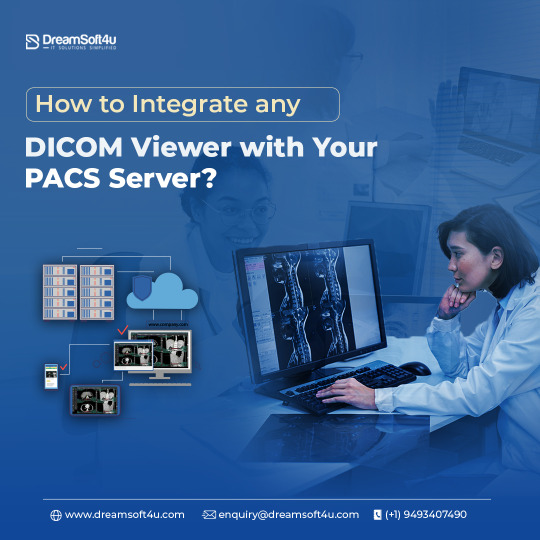
The healthcare industry is experiencing rapid advancements with all the latest updates. Since the advent of all medical equipment and machinery, maintaining patient’s medical information in the DICOM image has become easier. However, the integration between DICOM and PACS requires intervention from experts.
0 notes
Text
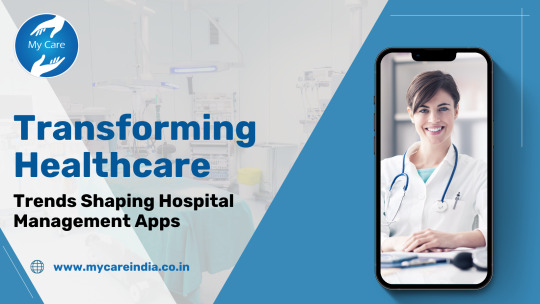
MyCare India provides a user-friendly telemedicine app connecting patients with doctors for convenient virtual consultations, ensuring easy access to quality healthcare services.
For More Information:-https://www.mycareindia.co.in/
#telemedicine#online pharmacy#healthcare#hospital management app#healthcare services#best e-healthcare platform in India#online doctor consultation#telemedicine app#telemedicine app development#telehealth technology
0 notes
Text
#ibiixo#ibiixo technologies#mobile app development#software development#telemedicine#telemedicine app#online doctor consultation
0 notes
Text
Global Telemedicine App Development Company
Unlock the potential of telemedicine app development with Consagous Technologies. We specialize in delivering comprehensive telemedicine app development services that seamlessly connect healthcare providers and patients. Our feature-rich software solutions cater to patients' needs conveniently and yield superior results. For further information, please visit consagous.co.
0 notes
Text
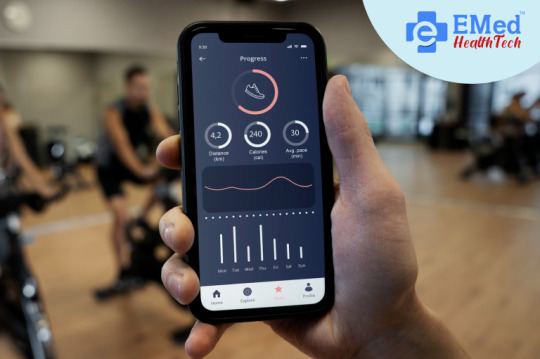
Optimal Strategies for Creating an Outstanding Fitness App Design
In a world where your smartphone can be your personal trainer, nutritionist, and workout buddy all rolled into one, the rise of fitness app Design has been nothing short of revolutionary. Imagine having a virtual gym in your pocket, motivating you to break a sweat and stay on top of your health goals.
At EMed HealthTech, we are dedicated to helping you develop the best fitness app that matches your vision and objectives. With our extensive experience in healthcare app development, we understand the intricacies of creating solutions that resonate with users and drive results. You can some of our work here.
If you’re looking to design a healthcare app that stands out in the competitive fitness market, reach out to our team today. Together, we can turn your idea into a reality.
0 notes
Text
Planning to develop your own telemedicine app? Check out our complete guide on how to make an app for telemedicine sector with features, tech Stack & costs. Click to read.
#Telemedicine App#Telemedicine Sector#Features#Tech Stack#Costs#Medical#Healthcare#App Development#Mobile App Development#MesaBizz
0 notes
Text
Telemedicine App Development
So, what is telemedicine? Let us start right from the first use of the term. The term telemedicine was coined in 1900 when an Australian doctor used a two-way radio to transmit a medical advertisement. But the meaning of the term has evolved over time.
Today, telemedicine refers to the use of modern communication tools for the delivery of remote healthcare services. Today, the communication tools used in telemedicine are smaller, advanced, and far more effective than the tools that were used when telemedicine first originated.
Initially, telemedicine technologies were to provide medical services to those people who lived in regions that did not have a hospital. But today, for people living in developed and developing countries, these technologies are a matter of convenience, rather than a necessity. However, in the wake of the recent COVID-19 virus outbreak, things have changed significantly.
If people require any healthcare service, the only option they have is to use a telehealth
app. These apps allow them to consult with a medical professional from the comfort of their homes. In such dire times, telemedicine apps have once again become a necessity. Analysts predict that the telemedicine industry will grow significantly in the coming years.
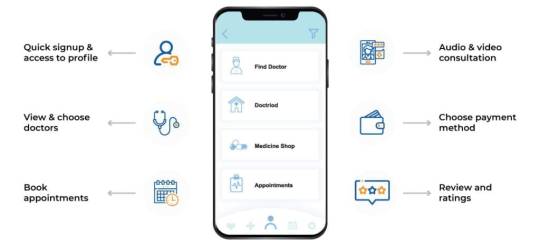
Steps To Develop A Telemedicine Platform
1. Idea Evaluation
2. Business Analysis
3. Market Research
4. Unique Features
5. Choose A Marketing Channel
Read More: Telemedicine App Development
0 notes
Photo
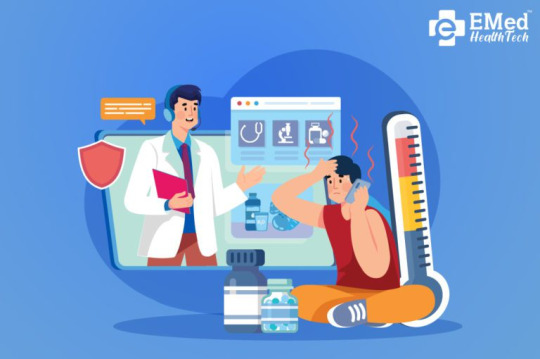
With technology advancing rapidly, one can also expect this to be reflected in telehealth and telemedicine platforms in many ways. Telehealth has seen one of the most astonishing growth in recent times, especially during the COVID pandemic. It brought about revolutionary new changes in the field of healthcare services. New technologies add to their facets, making it a constantly evolving field. All of the compasses point to great growth in the telehealth sector. We explored what we can expect from telehealth and telemedicine in 2023 and beyond, including predictions for the future of the field and the value of virtual healthcare beyond telehealth.
1 note
·
View note
Text
0 notes
Text
Always hire the best Telemedicine App Development company in Connecticut
SISGAIN is a well known telemedicine app development company in Connecticut. It offers the people options that are dependable as well as cost efficient, and it is expanding at a quick rate.
What exactly does it mean to practise "telemedicine"?
Telemedicine is the electronic communication of medical information from one place to another with the goal of improving the health of a patient. Applications for telemedicine include mobile devices, email, two-way video, telephones, and other forms of telecommunications technology. Telemedicine is becoming more popular. In addition, telemedicine may be used to a wide variety of service settings. Because of its rapid expansion, telemedicine is now an essential component of many subspecialties within the healthcare industry, as well as private medical offices, home health care, and even the consumer's place of work and residence. It is not generally accepted that telemedicine qualifies as its own medical subspecialty. Because of advancements in information technology or differences in the way healthcare is delivered, establishments that provide telemedicine need a greater monetary expenditure overall, which includes the cost of their goods and services. In most cases, the distinction between on-site medical care and telemedicine services is not made when determining the expenses of reimbursement. As a result, it is not possible to differentiate between the classification of remote services and the billing for such services.
To be able to provide Telemedicine App development in Hartford, SISGAIN puts in a lot of effort to ensure that the services they render are of the highest possible quality while being very cost effective.
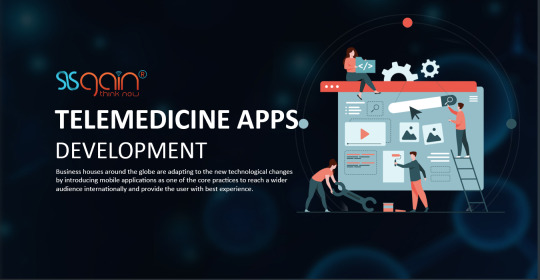
What are the Benefits that Can Be Obtained by Using Telemedicine?
Increased Availability of Medical Care: Because of advances in telemedicine, patients living in remote locations have had access to medical treatment for more than 40 years. Not only does telemedicine make it simpler for patients to seek care, but it also makes it possible for medical professionals to connect with offices that are located outside of their own local network. Despite a shortage of medical professionals in both urban and rural regions, telemedicine has enabled an increase in the amount of treatment provided to millions of patients.
Increased efficiency in regard to cost: The capacity of telehealth technology to either control or lower overall healthcare costs is among the most compelling arguments in favour of the use of this technology. Because of its efficiency, increased ability to treat chronic diseases, decreased travel time, shorter hospital stays, and sharing of qualified medical personnel, telemedicine has the potential to minimise the expenses associated with receiving medical treatment.
Improved quality of medical care: Numerous studies have shown that the use of telemedicine services results in the delivery of high-quality medical treatment. They provide services that are equivalent to those that are provided during in-person interactions with customers. Traditional therapies aren't nearly as effective as telemedicine when it comes to providing acute care or mental health services. Patients benefit both emotionally and medically from the use of telemedicine.
Demand from Patients That Has Increased: The use of telemedicine is in the customers' best interest. It has some of the most far-reaching effects not just on patients but also on their families and the communities in which they live. People are able to reduce their feelings of anxiety and spend less time travelling because of telemedicine. Numerous studies have shown that patients are satisfied with telemedicine services, which has led to an increase in demand for these services. Patients are able to access healthcare professionals who would not otherwise be available to them and can seek treatment without having to go very far thanks to these services. Patients may also avoid having to travel very far.
What Kinds of Medical Services Can Currently Be Obtained Via Telemedicine?
Examining the problems that are solved and the services that are made available is the key to achieving the fullest possible comprehension of telemedicine. Here are numerous examples:
It is not uncommon for a general practitioner or an allied healthcare professional to consult with either the patient or a specialist as part of general practice and as support for specialised therapy. When making a diagnosis, the patient or an expert's input is helpful to the physician. This may be accomplished by the use of real-time interactive video or the use of technology that records and transmits diagnostic pictures, patient vital signs, and/or video along with the patient's data for later review. Monitoring of patients remotely, such as via services offered for home healthcare. A laboratory that performs diagnostic tests or a home health care service employs gadgets to gather and communicate data remotely about patients. The information that is gathered for homebound patients may include vital signs such as the results of blood sugar tests, information from an electrocardiogram (ECG), or any number of other pieces of information about the patient. The use of telemedicine services may be of assistance to the work of visiting nurses.
The use of mobile devices or the internet by consumers in order to access specialised patient information and online discussion groups in which they may take part in peer-to-peer assistance is one method by which consumers can receive information on health and medical care.
It's possible that those who reside in more rural areas have easier access to highly specialised medical training. Continuing medical education may earn practitioners of several health professions credits.
Because they provide the most cutting-edge telemedicine app development in Hartford, you can put your faith in SISGAIN to provide dependable and useful telemedicine solutions. Through the use of telemedicine, technology may finally make receiving medical treatment more convenient. SISGAIN is a reliable and valuable telemedicine app development company in Connecticut and has made a name for itself by delivering services related to the development of telemedicine applications.
#telemedicine app development#telemedicine app development solutions#telemedicine software development#cloud based telemedicine software#telemedicine app#telemedicine#telemedicine solutions#telemedicine software solutions#Telemedicine Application Development Company#telemedicine app for doctors#white label telemedicine app#telemedicine app for android#open source telemedicine software#top telemedicine company
0 notes
Text
Telemedicine is the use of medical technology to provide healthcare services remotely. This can be done using a variety of different technologies, including video conferencing, telephone, and online chat.
0 notes
Text

At MyCare, you can easily book an online doctor appointment and get yourself treated by your favorite doctor. MyCare is a telemedicine service app where online hospital bookings can also be made at your home or anywhere.
For more info: - https://www.mycareindia.co.in/
#telemedicine#telemedicine app#telemedicine app development#telehealth technology#Telemedicine platforms
0 notes